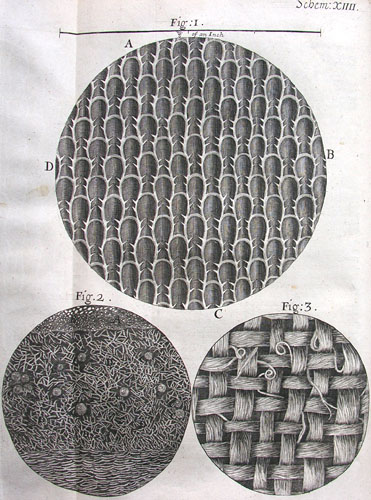Micrographia
The Old Library is home to around 50,000 early printed books, amongst them such scientific highlights as William Gilbert's de Magnete (1600), in which he coins the word 'electricity', to Newton's Philosophiae Naturalis Principia Mathematica (1687), introducing his three laws of motion.
Robert Hooke (1635-1702) was a remarkable man, known in particular for his scientific work in the fields of mechanics and microscopy. Most will know of him from their school days due to Hooke’s Law, which defines the relationship between the force applied to an elastic object, and its extension. However, his research also extended to microscopy, with many of his contributions being made in “Micrographia” published in 1665. It was the first such work to be devoted to the study, and included illustrations of his observations, highlighting what the microscope could do for biological research.
Through his work he discovered the cell, by his examination of cork. Hooke is thought to have chosen the word because the units he observed reminded him of the cells of a monastery.
| ....I could exceedingly plainly perceive it to be all perforated and porous, much like a Honey-comb, but that the pores of it were not regular….these pores, or cells,…were indeed the first microscopical pores I ever saw, and perhaps, that were ever seen, for I had not met with any Writer or Person, that had made any mention of them before this… |
|
A free electronic version of this volume has been produced by Project Gutenberg.
This Special Collections Spotlight article was contributed on 7 August 2013 by Rachel Walker, Library Projects Assistant (Maternity Cover).
